
Roots
Consider for a moment the quiet hours of slumber, when the world softens its edges and the body seeks its deep restoration. For those with textured hair, this period has always carried a unique significance, a time when intentional care becomes a silent shield. The inherent qualities of coily, kinky, and curly strands—their delicate structure, their tendency toward dryness, their inclination to intertwine—meant that the nocturnal hours, far from being a simple repose, posed a distinct challenge. Ancestral wisdom, passed through generations, understood this delicate balance.
It was not merely about waking with hair intact; it was about honoring the very essence of these crowning glories, ensuring their vitality against the subtle wear of the night. This understanding, deep and resonant, forms the bedrock of historical sleep practices that safeguarded textured hair from harm.

What Is the Intrinsic Vulnerability of Textured Hair at Rest?
Textured hair, with its remarkable diversity in curl patterns and densities, possesses an exquisite architecture. Each curl, a spiral or zig-zag, represents a point where the hair shaft bends, creating areas of inherent fragility. Unlike straight hair, which slides smoothly against surfaces, the coiled nature of textured strands means they readily catch, snag, and rub. During sleep, as one shifts and turns, this natural tendency is amplified.
The friction against rough surfaces, like common cotton pillowcases, can abrade the outermost layer of the hair, the cuticle. This microscopic damage, repeated night after night, leads to raised cuticles, which in turn allow precious moisture to escape. The consequence is dryness, brittleness, and ultimately, breakage.
The very structure that grants textured hair its voluminous beauty also renders it more susceptible to mechanical stress. A single strand, under magnification, reveals its unique elliptical or flattened cross-section, a shape that resists the smooth flow of natural oils from the scalp down the length of the hair. This means textured hair is often naturally drier at the ends, making moisture retention a constant pursuit.
Sleep, without protective measures, exacerbates this challenge, allowing environmental humidity and pillow absorption to strip away vital hydration. The knowledge of this innate vulnerability prompted communities across continents to devise ingenious methods of protection, ensuring the hair remained a source of pride and health.
The intricate geometry of textured hair, while conferring its unique beauty, also renders it susceptible to the subtle abrasions of nightly rest, demanding deliberate protection.
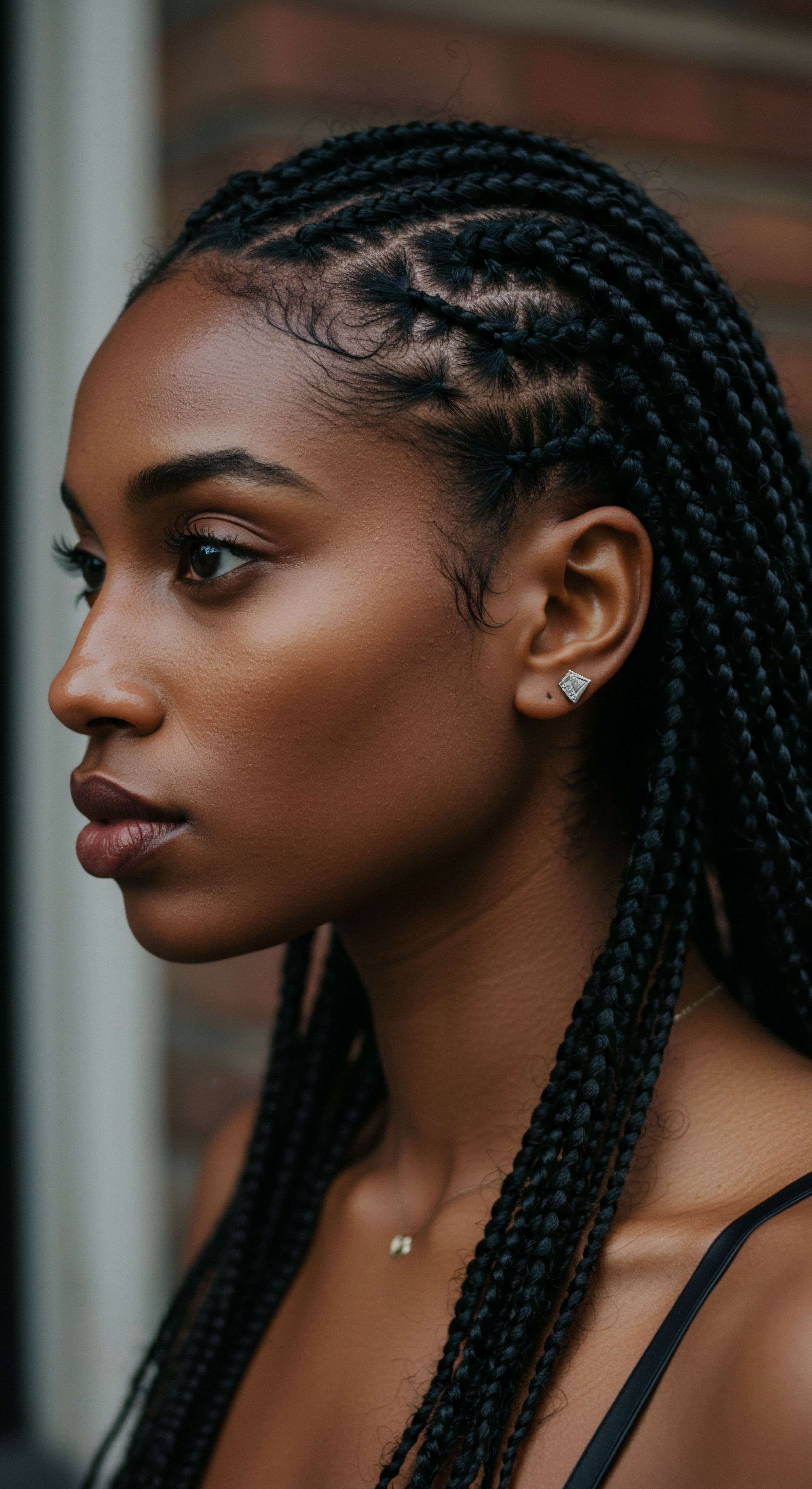
How Did Ancient Knowledge Inform Hair Preservation?
Long before the advent of modern science, communities possessed an intuitive understanding of hair’s needs. This understanding was not theoretical but practical, born from observation and generations of shared experience. They recognized the drying effect of air, the abrasive nature of certain fabrics, and the way unprotected hair could become a tangled nest by morning. Their solutions were elegant in their simplicity, yet profoundly effective.
- Material Selection ❉ Early protective practices often centered on the use of materials known for their smooth surfaces. While silk is widely recognized today, historical contexts point to various finely woven cloths or softened animal skins that would have provided a gentler contact surface than coarser alternatives. The smooth character of such coverings helped minimize friction, allowing hair to glide rather than snag.
- Moisture Preservation ❉ The application of natural oils and butters was a widespread practice before bed. Substances such as shea butter, palm oil, or various plant-derived oils, depending on regional availability, were massaged into the hair and scalp. This not only nourished the hair but also created a protective barrier, sealing in moisture and guarding against dehydration during the night.
- Containment Techniques ❉ Keeping the hair contained was a primary objective. Loose hair, particularly when long, is prone to tangling and knotting. Simple braiding, twisting, or coiling methods were employed to gather the hair into a more manageable form, reducing its exposure to friction and preventing it from becoming a matted disarray. This practice, often accompanied by oiling, laid the groundwork for modern protective styles.
These foundational practices were not isolated acts but components of a holistic approach to hair wellness, reflecting a deep respect for the body and its natural expressions. They were a testament to collective ingenuity, responding to an elemental need with resources readily available, shaping rituals that endured for centuries.

Ritual
As the sun dipped below the horizon, and the rhythms of daily life gave way to the quiet anticipation of night, a different kind of cadence began for many. For those with textured hair, the evening hours were not merely a winding down but an intentional passage into care, a series of practices that transcended simple grooming. This was the realm of ritual, where hands moved with purpose, guided by the accumulated wisdom of generations, preparing strands for the restorative darkness. The focus shifted from foundational understanding to the practical application of knowledge, transforming protective measures into acts of gentle devotion.

What Ancient Hair Wrappings Protected Textured Hair?
The act of wrapping the hair before sleep stands as one of the most enduring and universally recognized historical practices for safeguarding textured strands. This was far from a uniform technique; it varied across cultures and regions, adapting to available materials and specific hair needs. The core principle, however, remained consistent ❉ to encase the hair in a smooth, non-abrasive material that would shield it from friction and preserve its natural state.
In many African and Afro-Caribbean cultures, head wraps, often referred to as ‘head ties’ or ‘dukús’, served this vital purpose. These were not simply fashion statements, though they carried profound cultural significance; they were functional garments designed to protect hair from damage and breakage overnight. The material of choice varied, but finely woven cloths that offered a smooth surface against the hair were highly valued. These wraps kept curls and coils compressed and secure, preventing them from rubbing against pillows and losing moisture.
Across East Asian cultures, particularly in ancient China and Japan, silk wraps were employed to preserve elaborate hairstyles that took hours to construct. Geishas, for instance, used silk ‘kazashi’ to maintain their intricate updos and prevent damage during sleep. The smooth quality of silk allowed these delicate styles to remain undisturbed, preventing tangling and breakage. Similarly, in South Asia, women used silk scarves and wraps to protect their hair from environmental elements and friction, often as part of their nightly routine.
Across diverse cultures, the ritual of hair wrapping before sleep emerged as a powerful shield, protecting textured strands from the abrasive forces of the night.
The ingenuity extended beyond mere covering. Some traditions incorporated specific methods of securing the hair within the wrap. This might involve:
- Braiding or Twisting First ❉ Before wrapping, hair was often loosely braided or twisted into sections. This minimized the hair’s surface area exposed to friction and further contained the strands, making them less prone to tangling. This practice is still common today for preserving curls and reducing knots.
- Strategic Placement ❉ The way the hair was positioned within the wrap also mattered. Sometimes, hair was gathered at the crown, creating a ‘pineapple’ effect, allowing curls to fall forward and minimizing compression against the back of the head. Other times, it was spread flat and smooth against the scalp before wrapping.
- Layering Materials ❉ In some instances, multiple layers or different materials might have been used – a softer inner layer for direct hair contact, and a more durable outer layer for security or warmth.
The nightcap, a familiar image in European history, also served a similar protective role, particularly for women with long hair or those wearing wigs. While often associated with warmth, these caps, especially those made of satin or silk, protected hair from tangling and helped preserve hairstyles. The common thread through these diverse practices is the conscious effort to create a buffer between vulnerable hair and the potential for nightly damage.
| Region/Culture African/Afro-Caribbean |
| Material Type Finely woven cloths, 'dukús' |
| Primary Purpose Friction reduction, moisture retention, style preservation |
| Region/Culture East Asian (China, Japan) |
| Material Type Silk 'kazashi' |
| Primary Purpose Style preservation, frizz control, tangling prevention |
| Region/Culture South Asian (India, Pakistan) |
| Material Type Silk scarves, 'dupatta' |
| Primary Purpose Environmental protection, friction reduction, moisture retention |
| Region/Culture European (Historical) |
| Material Type Satin or silk nightcaps |
| Primary Purpose Warmth, style preservation, tangling prevention |
| Region/Culture These materials and practices represent a global understanding of hair protection during sleep. |
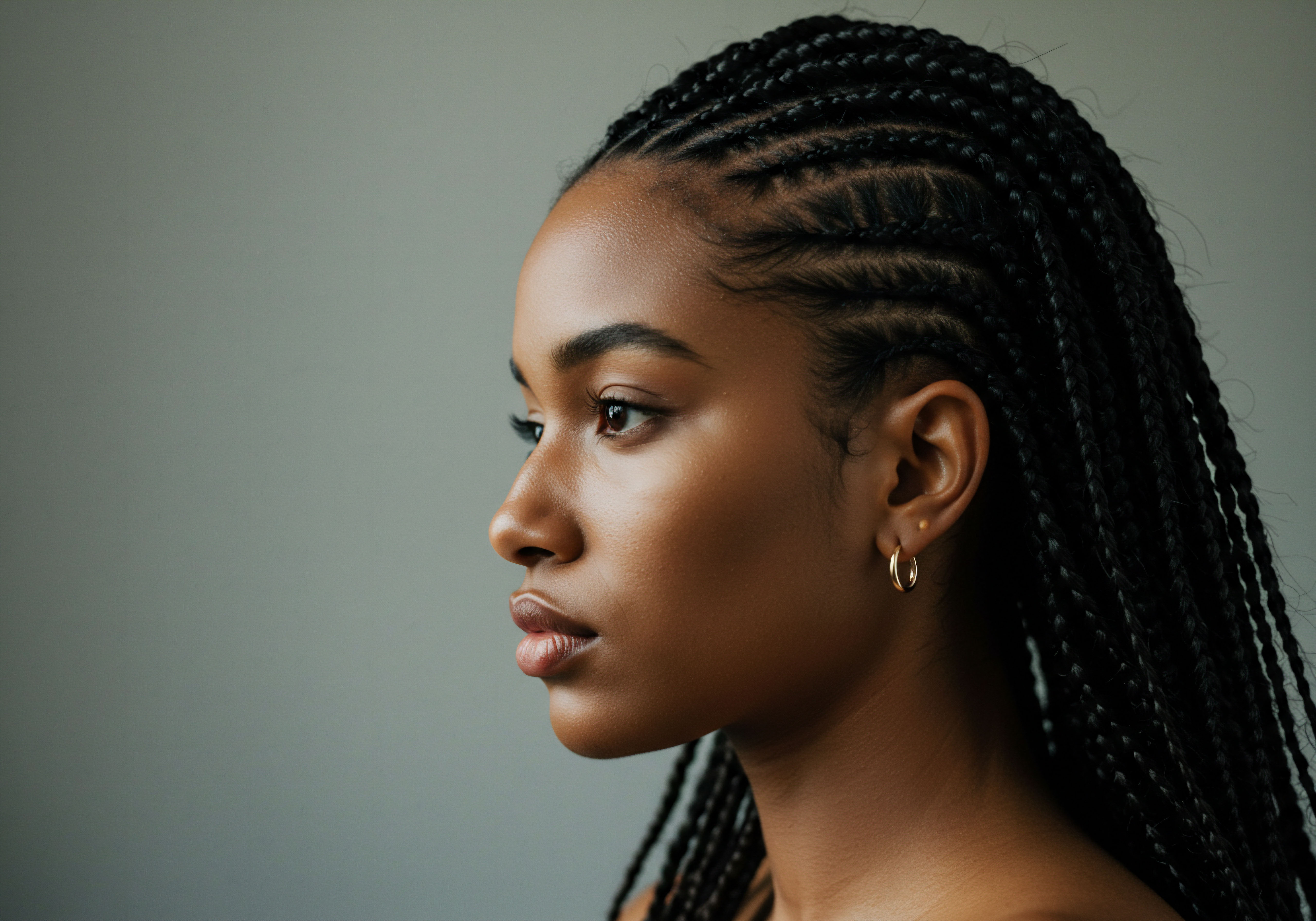
How Did Hair Oiling and Braiding Rituals Contribute to Nighttime Health?
Beyond external coverings, internal preparation of the hair played a crucial part in its nocturnal preservation. The application of natural emollients and the strategic manipulation of hair into contained styles were widespread practices that contributed significantly to maintaining hair health during sleep.
Oiling the hair and scalp before bed was a common ritual across many cultures. In North Africa, Berber women used argan oil to nourish hair and nails, often rubbing garlic pulp onto the scalp before bed to stimulate hair growth. These practices provided deep conditioning, locking in moisture and preventing the hair from drying out overnight.
The oils created a smooth coating on each strand, reducing friction as the hair moved against itself or against the sleeping surface. This not only protected the hair from mechanical damage but also ensured it remained pliable and soft upon waking.
Braiding and twisting hair into various configurations before sleep served multiple purposes. They prevented tangling and knotting, which are significant causes of breakage when hair is loose. A study on protective hairstyles for length retention highlights that tucking away hair ends protects them from friction and mechanical damage.
For example, in Indian culture, mothers commonly braid their daughters’ hair before bed, believing it protects the strands. This containment minimizes the hair’s exposure to environmental elements and pillow friction.
The choice of braid or twist varied. A loose braid, a single large plait, or multiple smaller twists would be chosen based on hair length, texture, and desired morning style. The key was to keep the style loose enough to avoid tension on the scalp, which could lead to hair loss, while still being secure enough to stay in place.
This deliberate styling not only preserved the hair’s physical integrity but also contributed to the ease of morning detangling, reducing further stress on the strands. The continuity of these practices, from ancient times to the present, underscores their timeless efficacy in safeguarding textured hair through the quiet hours.

Relay
As we peer more closely into the quiet customs of the past, a sophisticated understanding of hair mechanics and environmental interactions begins to surface. The seemingly simple sleep practices of our ancestors were, in fact, remarkably attuned to the delicate biology of textured hair, forming a silent dialogue between human ingenuity and natural vulnerability. This deeper look transcends mere anecdote, inviting us to consider the underlying scientific principles and cultural imperatives that propelled these enduring rituals into being. The story of historical sleep practices for textured hair is a testament to an intuitive, practical science, refined over countless nights.
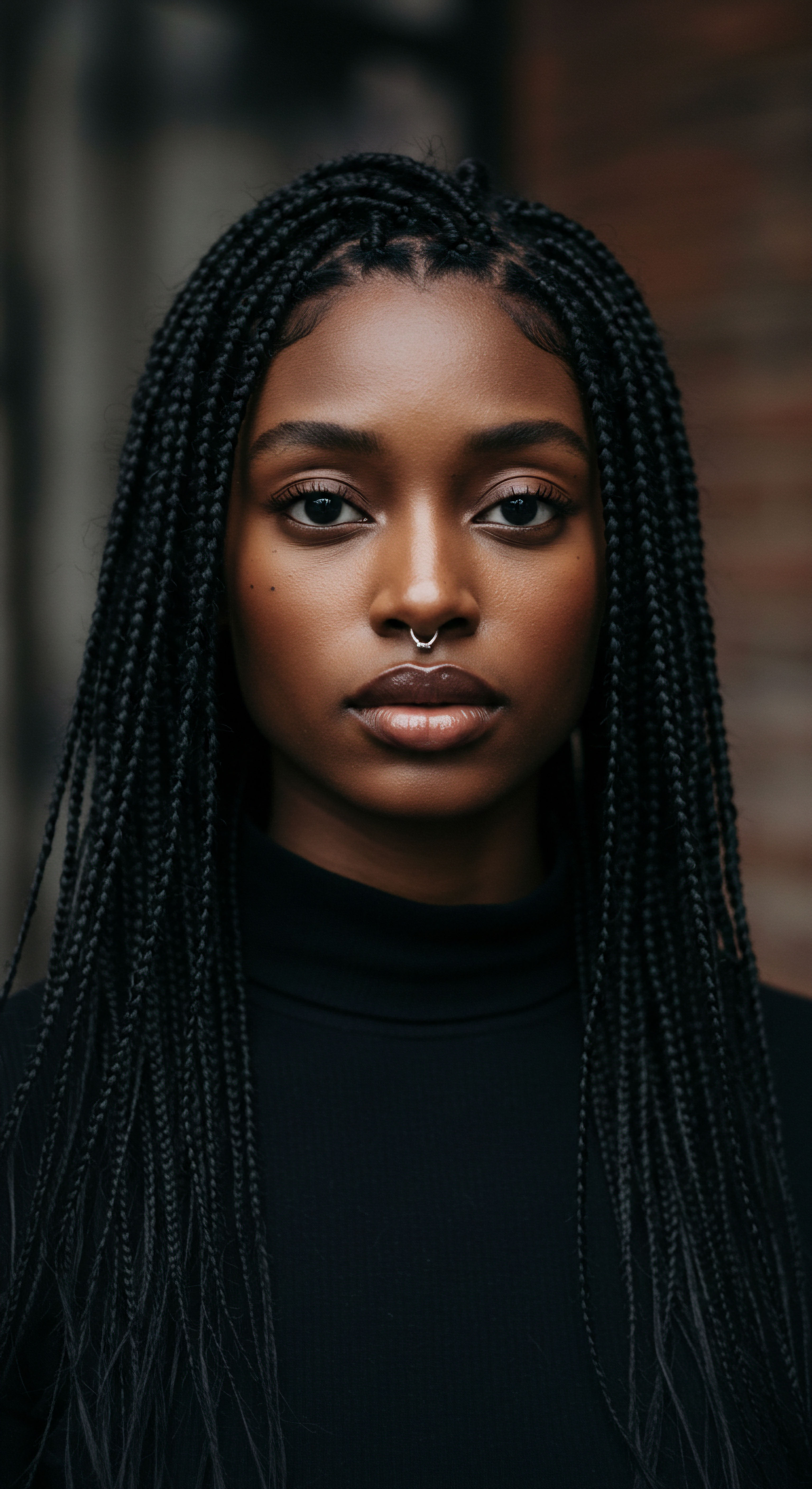
How Does Hair Biomechanics Relate to Nighttime Protection?
The structural properties of textured hair, particularly its elliptical cross-section and numerous bends, render it inherently prone to mechanical stress. When a hair strand, especially one with a coily or kinky pattern, rubs against a surface like a pillowcase, the points of contact experience concentrated friction. This friction can lift and damage the cuticle, the outermost protective layer of the hair shaft. A compromised cuticle leads to increased porosity, meaning the hair loses moisture more readily and becomes more susceptible to breakage.
During sleep, individuals typically shift positions many times. This movement, often unconscious, creates a constant rubbing and compression of the hair against the sleeping surface. For textured hair, this translates into tangles and knots, which then require forceful detangling in the morning, leading to further mechanical damage.
The practices of wrapping, braiding, or using smooth coverings directly address this biomechanical challenge. By reducing the surface area of hair exposed to friction and providing a slick, non-abrasive interface, these methods preserve the cuticle’s integrity.
Consider the principle of elasticity, the hair’s ability to stretch and return to its original state. Hair with healthy elasticity is more resilient to breakage. When hair is dry, its elasticity diminishes, making it more brittle. Nighttime moisture retention, achieved through oiling and protective coverings, helps maintain this elasticity, allowing the hair to withstand the minor stresses of sleep without fracturing.
A study published in the National Library of Medicine highlights that melatonin, a hormone regulating sleep, also helps stimulate hair follicles and extend the anagen (growth) phase. While direct causation of hair damage from lack of sleep alone is not definitively established as the sole factor, chronic sleep deprivation can elevate stress hormone levels, such as cortisol, which are known to disrupt hair growth cycles and potentially lead to thinning or shedding. This suggests a deeper, systemic connection between overall physiological well-being during rest and hair health, underscoring the holistic nature of ancestral care practices.
The protective measures of historical sleep rituals, like wrapping and braiding, inherently addressed the biomechanical vulnerabilities of textured hair, minimizing friction and preserving its structural integrity.
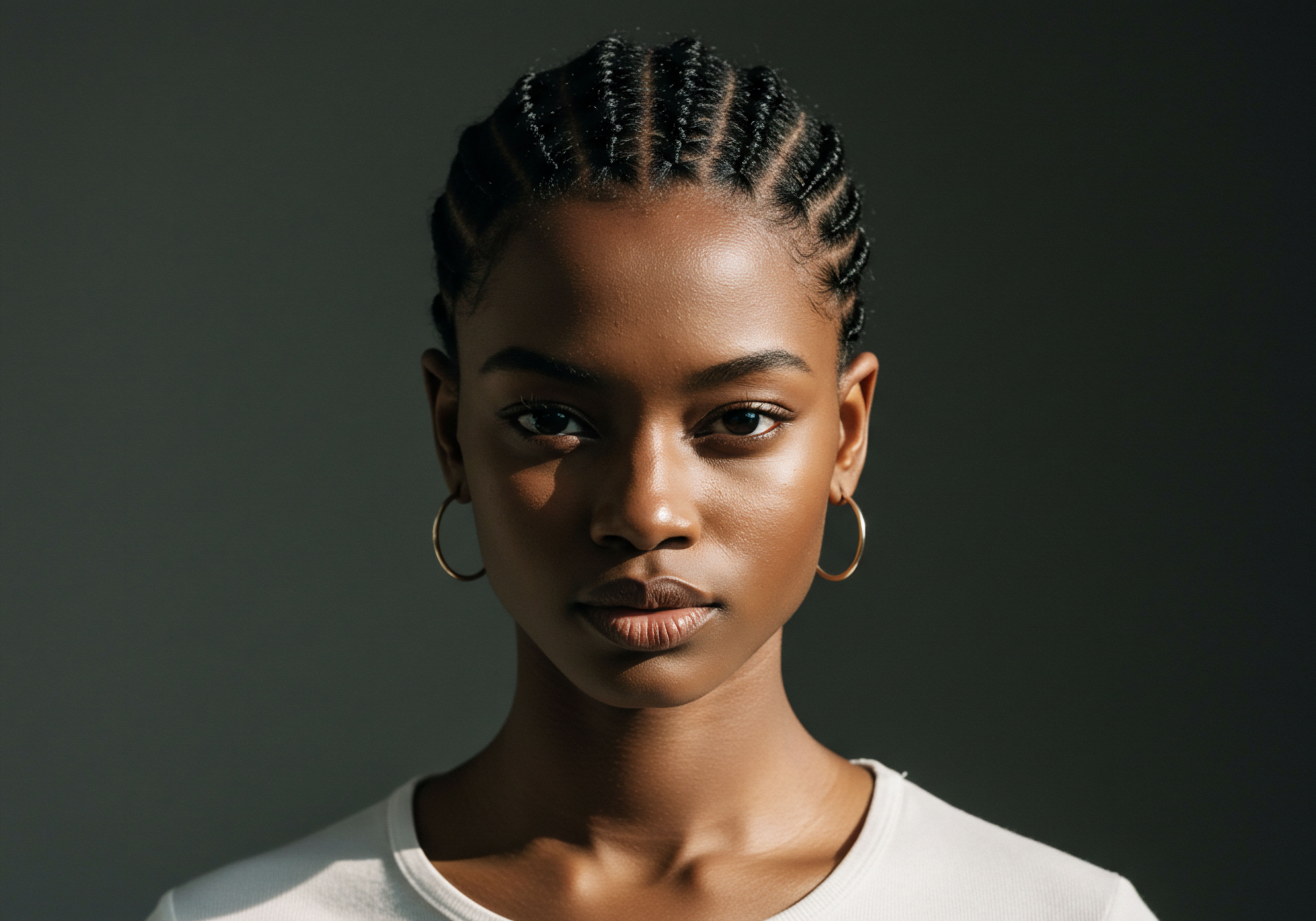
What Is the Cultural Significance of Nighttime Hair Practices?
Beyond the purely practical considerations of hair preservation, historical sleep practices for textured hair were deeply intertwined with cultural identity, social status, and even spiritual beliefs. Hair, particularly in many African societies, was considered a profound symbol of a person’s identity, distinguishing status based on geographic origin, marital status, age, ethnic identity, religion, wealth, and rank. The meticulous care given to hair, including nighttime rituals, reflected a societal value placed on health, beauty, and communal connection.
For example, in pre-colonial African societies, the intricate styling process, which could take hours or even days, included washing, combing, oiling, braiding or twisting, and decorating the hair. This hair care ritual was often a social opportunity, a time for bonding with family and friends. The act of preparing hair for sleep, whether through braiding or wrapping, extended this communal and personal significance into the private hours. It was a continuation of self-respect and cultural affirmation.
During periods of enslavement, head wraps and bonnets took on a dual meaning. While they continued to offer practical protection for hair, they also became symbols of resistance and resilience. Enslaved African women, stripped of their cultural identity and access to traditional hair care tools, used scarves to hide their hair, which was often matted and damaged due to harsh conditions.
However, these coverings also served as a discreet means of communication; in parts of Central America, Black women used the folds in their headscarves to convey coded messages to one another, unseen by enslavers. This speaks to the profound adaptive and symbolic power of these practices, even under duress.
The cultural value placed on long, healthy hair, often seen as a sign of vitality and fertility, provided a strong impetus for protective nighttime practices. The belief that hair could serve as a conduit to the spiritual world, as among the Yoruba who viewed braided hair as a way to send messages to the gods, imbued these routines with sacred weight. Thus, protecting hair during sleep was not merely a chore but a participation in a broader cultural and spiritual continuum, ensuring the well-being of both the individual and their connection to their heritage.
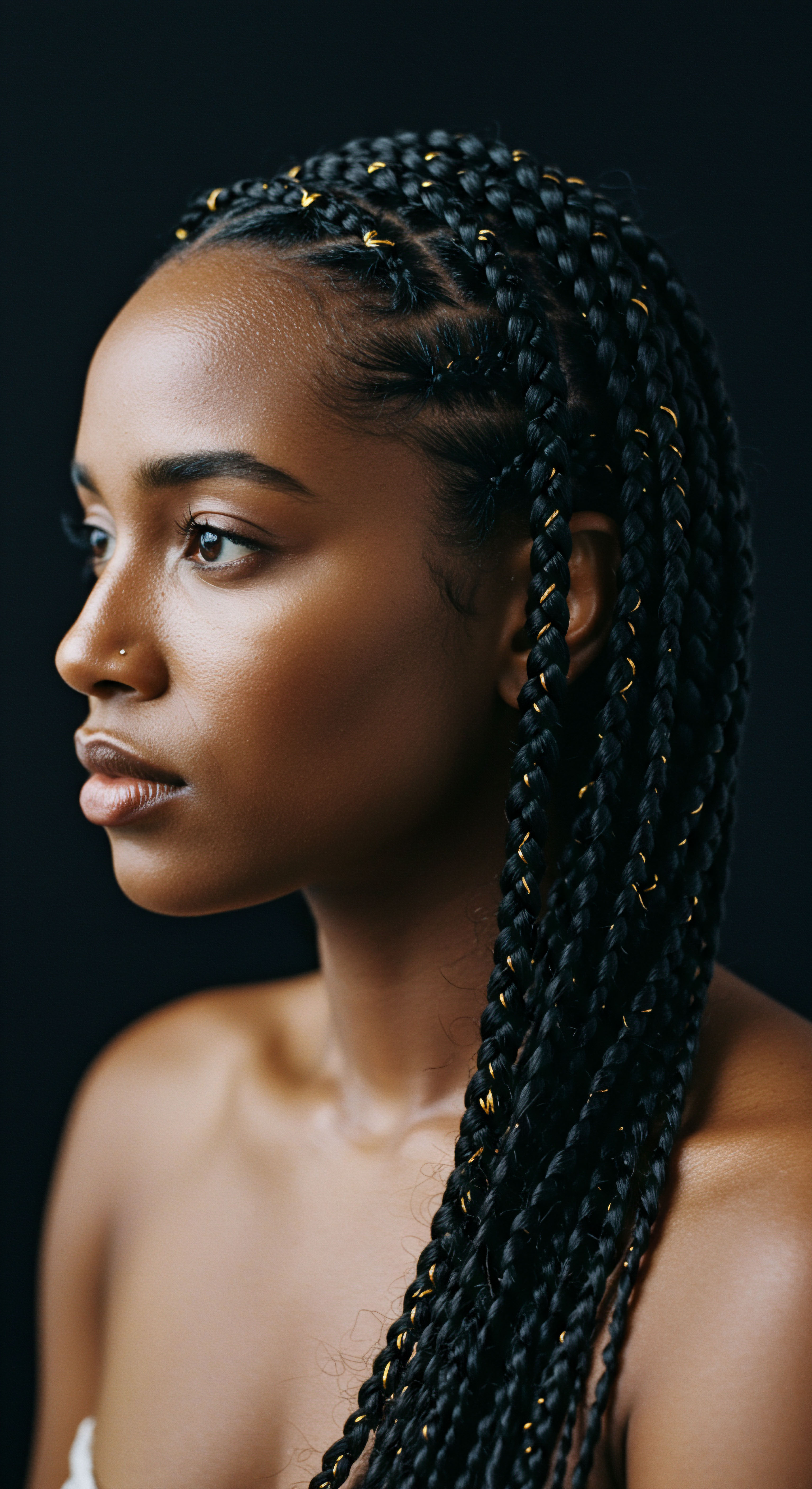
Do Traditional Sleep Methods Outperform Modern Alternatives? A Look at Comparative Efficacy.
The efficacy of historical sleep practices for textured hair, while intuitively understood by those who practiced them, finds compelling resonance in contemporary scientific understanding. While modern innovations offer convenience, the core principles of protection—reducing friction, maintaining moisture, and minimizing manipulation—remain unchanged, and often, the traditional methods perform remarkably well, sometimes even surpassing newer approaches in simplicity and sustainability.
Consider the widely adopted modern practice of using silk or satin pillowcases. These materials are lauded for their smooth surfaces, which reduce friction on hair strands, thereby preventing breakage and frizz. This is a direct echo of the historical use of finely woven cloths and silk wraps. However, the use of a head covering, such as a bonnet or wrap, offers an additional layer of protection by completely enclosing the hair, preventing it from coming into contact with any sleeping surface, including exposed skin or bedding that might still exert some friction.
A fascinating, if perhaps controversial, historical practice found in some cultures involved the use of natural substances for hair conditioning and protection. For instance, anecdotal reports from certain traditional communities suggest the use of plant-derived gels or specific herbal concoctions applied before sleep, which would then be covered. While hard scientific data on all such specific historical concoctions can be scarce, the underlying principle of sealing moisture and creating a protective barrier aligns with modern cosmetic chemistry.
A study from ResearchGate highlights that silk proteins, due to their low molecular weight, can penetrate hair strands and bind to keratin, forming a protective layer that prevents moisture loss. This scientific backing for silk’s protective qualities retrospectively validates the wisdom of cultures that used silk and similar smooth fibers for nighttime hair care.
The emphasis on low manipulation in historical protective styles, such as loose braids or twists, is also scientifically sound. Hair is weakest when wet and most prone to breakage when manipulated. By securing hair in a contained style before bed, historical practitioners intuitively reduced the need for extensive combing and styling upon waking, thereby minimizing daily mechanical stress.
This contrasts with modern habits that might involve more frequent washing and styling, sometimes leading to cumulative damage. The historical emphasis on gentle care and minimal intervention, especially during sleep, stands as a powerful testament to an intuitive understanding of hair health that predates modern laboratories.

Reflection
The journey through historical sleep practices for textured hair reveals a profound continuity, a quiet wisdom echoing across generations and continents. These were not merely acts of convenience but deeply rooted expressions of care, resilience, and cultural identity. The delicate strands, often misunderstood in modern contexts, found their nightly sanctuary in ingenious solutions born from a knowing respect for their unique needs. As we look upon these past customs, we are reminded that the pursuit of healthy hair is not a fleeting trend but a timeless aspiration, one that finds its truest expression in understanding, honoring, and protecting the beautiful complexities of textured hair, even as the world sleeps.
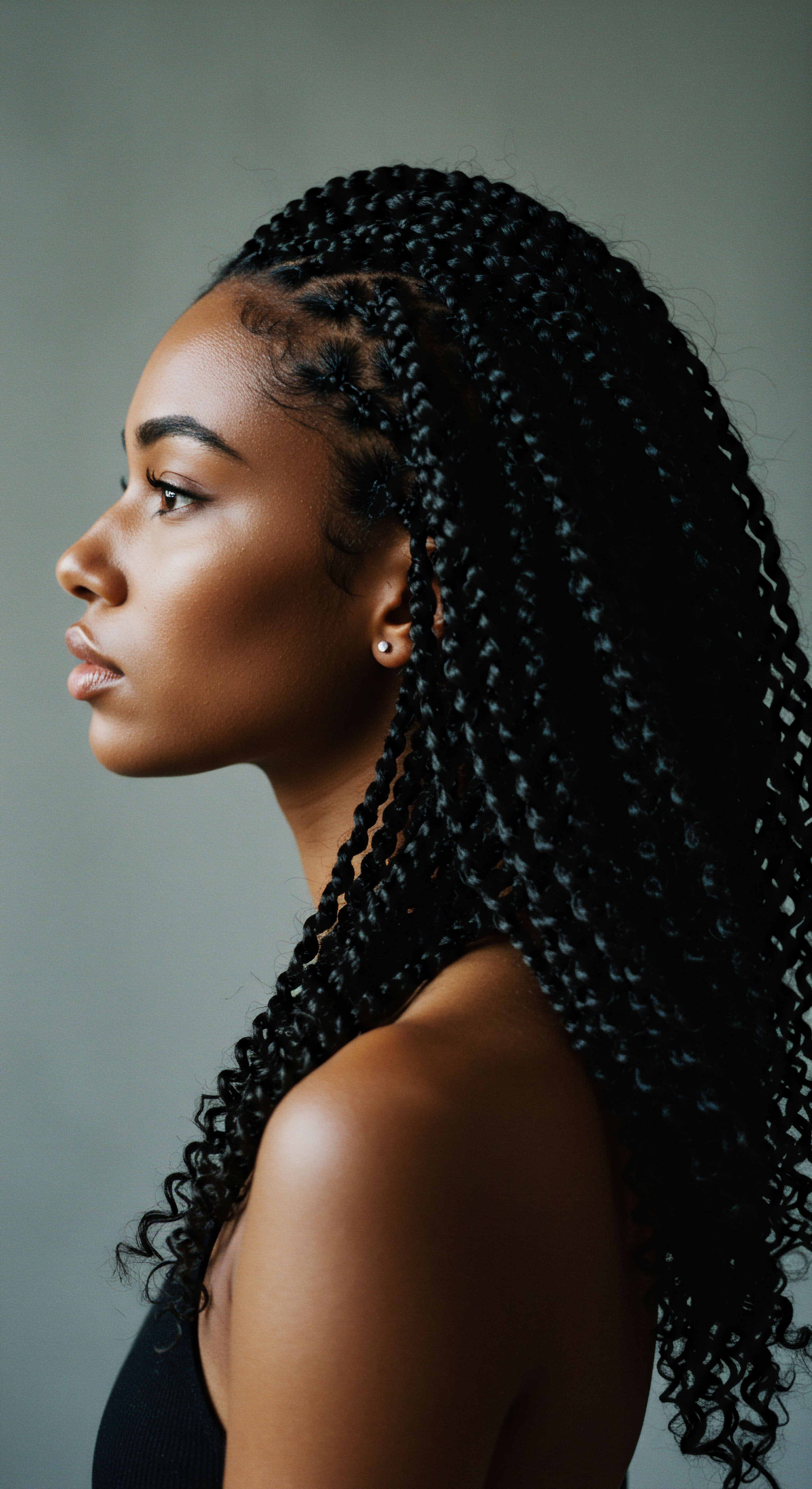
References
- 1. The Silk Collection. Benefits of Silk Hair Wrap for Sleeping | Silk Bonnet.
- 2. Abena, K. Historical Perspectives on Hair Care and Common Styling Practices in Black Women. 2025.
- 3. Esme Luxury. Silk Hair Wraps in Different Cultures ❉ A Global Perspective. 2024.
- 4. Shaz & Kiks. How Braids Protect Your Hair While You Sleep. 2020.
- 5. Yao Secret. Hair Secrets Exposed ❉ 7 Red Yao Long Hair Rituals. 2023.
- 6. The Chic Icon. Secret Benefits of Silk for Hair and Skin. 2024.
- 7. Reddit. Ancient Chinese sleep with intricate hairstyle. 2023.
- 8. YouTube. Sweet Dreams ❉ a History of the Nightcap. 2024.
- 9. Sew Historically. History Of The Nightcap – Victorian And Edwardian Hair Care. 2019.
- 10. Katherine Haircare. Protective Styles Are the Most Underrated Hair Growth Secret. 2023.
- 11. Quora. Did ancient Chinese people have something like gel or hairspray to keep their hair up? 2021.
- 12. Burlybands. 6 Benefits of Braiding Hair at Night. 2023.
- 13. TikTok. Protective Hairstyles for Length Retention ❉ Modern vs Historical Hair Care. 2023.
- 14. Byrdie. The Significance and History of Bonnets. 2022.
- 15. White Rose Research Online. The biomedical use of silk ❉ past, present, future.
- 16. GirlsOnTops. A Sacred Legacy ❉ On Black Hair And The Revolutionary Power of Self-Exp. 2020.
- 17. Sew Historically. Night-Time Hair Routine – Victorian And Edwardian Hair Care. 2015.
- 18. Living History. Golden Locks ❉ Hair Care in the Renaissance Era. 2024.
- 19. Wilderness Safaris. The history & meaning of head wraps across Africa. 2015.
- 20. Wikipedia. Bonnet (headgear).
- 21. Amerisleep. How to Sleep with Long Hair. 2024.
- 22. Undefined. Understanding Hair Elasticity ❉ How to Assess & Improve The Strength of Your Curls. 2023.
- 23. Natural Eclipse. Unveiling the Surprising Similarities Between Curly Sleep Gear And Hair Wrapping With Toilet Paper. 2024.
- 24. Juicy Chemistry. Can I Sleep with a Cotton Scarf? Benefits and Tips for Nighttime Hair Care. 2024.
- 25. Al Arabiya. Traditional beauty secrets of North African Berber women. 2016.
- 26. YouTube. She Tried an Ancient African Hair Mask—Here’s What Happened Overnight! 2025.
- 27. Juicy Chemistry. How to Prevent and Stop Hair Breakage? 13 Home Remedies. 2021.
- 28. Quora. How to prevent my hair from breaking off in my sleep. 2020.
- 29. pan-African. Effective Afro Hair Care Routines. 2021.
- 30. ResearchGate. Potential of silk proteins in cosmetics.
- 31. Reddit. Braids/ indigenous hair care. 2023.
- 32. Kaydua. 5 centuries-old African self care rituals that you should try right now. 2020.
- 33. Ogle School. 6 Ways to Protect & Prevent Your Hair from Breakage. 2019.
- 34. Road Test ❉ I tried silk hair wraps and pillowcases to see if they improved my hair health. 2024.
- 35. L’Oréal Paris. How Does Sleep Affect Hair Health & Growth? 2022.
- 36. Unlocking Ancient African Beauty Traditions ❉ A Tribute to Black History Month with Timeless Indigenous Ingredients for Radiant Skin and Hair. 2024.
- 37. The University of Chicago Press ❉ Journals. Anthropology of the Night ❉ Cross-Disciplinary Investigations.
- 38. TikTok. Preventing Hair Damage While Sleeping ❉ Tips and Tricks. 2024.
- 39. BLAM UK CIC. The history of Black Hair. 2022.
- 40. Reddit. Taking care of hair. 2023.
- 41. PMC. Techniques Used for Hair Style Maintenance while Sleeping May Be a Risk Factor for Traction Alopecia. 2021.
- 42. Reddit. How to halt sleep-related hair breakage? 2023.
- 43. Clinikally. Impact of Sleep Deprivation on Hair Health. 2024.
- 44. Road Test ❉ I tried silk hair wraps and pillowcases to see if they improved my hair health. 2024.
- 45. L’Oréal Paris. Sleep and Hair Growth ❉ How Your Nighttime Hair Care Routine Impacts Your Hair. 2025.
- 46. The University of Chicago Press ❉ Journals. EAT WELL, SLEEP WELL, AND EXERCISE ❉ Latinx Self-Care Practices at San Jose State University.